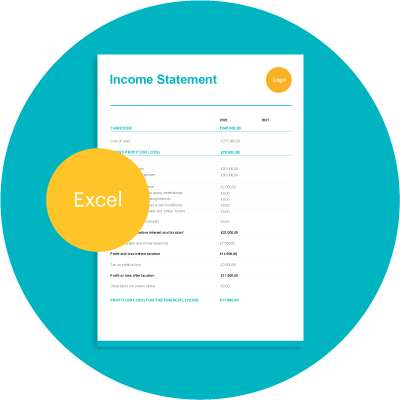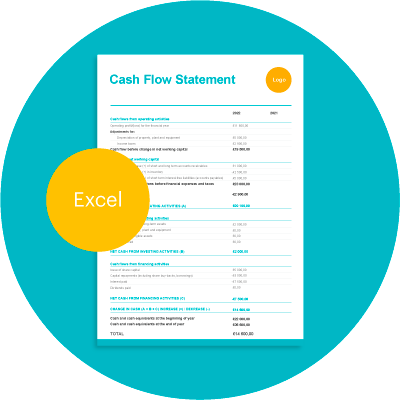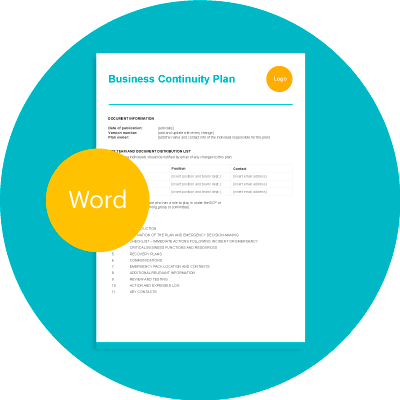Invoicing, bookkeeping & more
With Zervant, you get powerful invoice automation and bookkeeping tools in one intuitive web and mobile app.
Create Free AccountBill of Quantities Template
Looking for a bill of quantities template that you can start using straight away? Search no further! Our comprehensive template follows NRM2 (more on that in a moment) and you can download it for free in Microsoft Word.
Table of Contents
The bill of quantities document
According to RIB CSS, a bill of quantities (BQ or BOQ for short) is “a detailed and itemised pricing document”. It itemises everything that is needed to complete a construction project. It’s usually prepared by a client’s quantity surveyor or cost consultant.
It’s primarily used during the procurement phase of a construction project and often as part of a tender. Contractors price the work described in the bill, add the costs to the bill and submit it to the client with the rest of their tender documentation.
The contents of the bill vary depending on the project. But it’s always got the same sections. Before we look at what these are, it’s time for a quick disclaimer.
We’ve borrowed a lot of the terms and contents of this article from the experts in preparing bills of quantities at the Royal Institute of Chartered Surveyors (RICS). Specifically, the second editions of their New Rules of Measurement 1 and 2 (NRM1 and NRM2). We’ll refer to these often, and if you need any more information, they should be your first port of call.
Back to the sections.
Measured works
The largest section in a bill of quantities is usually the measured works section. Measured works are all the physical pieces of work needed to complete a construction project that can be measured when a bill of quantities is prepared.
For an item to be measurable, the specifications and quantities of the item must be known.
By specifications, we mean the type and quality of the material(s), the dimensions of the item, and how it should be fixed or installed.
The specifications of the item are used to give a full description of each item in the bill. The quantities confirm the amount of each item that is needed.
So, for example, if the project was to construct an office block, one of the items of work in this section could be the window frames to be fitted on the top floor of the block.
The description of the window frames will detail whether they are to be made of wood and what kind, and give the length, width and height measurements. The quantity column would detail the number of frames required.
In contrast, if the item was preparatory excavation work, the quantity given would likely be a measurement of the area to be excavated, rather than a number. The description would likely refer to a drawing showing the area, and the depth noted.
Refer to Chapter 3 of NRM2 for more guidance on how to measure building works and how to set out all the necessary information in a bill.
In summary, the measured works section of a bill of quantities is really a glorified, super-detailed order form. If that’s what you’re looking for, check out our order form template.
Preliminaries
This section is usually the first section in a bill of quantities, and it contextualises the construction site and the project. For example, it will include information about the boundaries of the site, as well as services and access routes.
It also lists all the client’s requirements for the project. These will include the client’s reporting requirements, testing and operating requirements, essential quality standards, contract terms and more.
Tip: if you need contract templates, you might find our service level agreement template helpful.
Provisional sums for non-measured works
This section deals with work that cannot be detailed accurately at the time the bill is prepared. This might be because:
- the client has not yet instructed a firm design for the works
- the works are to be executed by someone else (e.g., a statutory undertaker)
- the contractor is going to design the works
These works should still be itemised in a bill of quantities to ensure that the bill gives as comprehensive an overview of the project as possible.
They’re usually listed in the provisional sums section of a bill and the quantity surveyor or cost manager will set sums against them to cover their cost.
Risk allowances
This section of a bill of quantities lists risks that the client wants to transfer responsibility for to the contractor as part of the construction project. Examples might include weather, delays and faulty workmanship or materials.
If the contractor is happy to accept these, it’s up to the contractor to price the risks and add the costs to the bill of quantities. These figures are often referred to as risk allowances.
Overheads and profit
As a bill of quantities is a pricing document, there needs to be a place for a contractor to “apply their required percentage addition for overheads and profit”[i]. Otherwise, why would they take on the project?!
The percentage is usually applied to the cost of the preliminaries, all types of work (measured and unmeasured but excluding dayworks – more on them in a moment) and risk allowances.
Credits
This section of the bill of quantities is where the client can list items which the contractor will keep that the client would like the contractor to offer a credit for.
Credits are most relevant for building projects like refurbishment or demolition works.
Example items include:
- old building materials
- mechanical and electrical plant
- fittings, furnishings and equipment
The contractor can refuse this in their tender bid. If they accept, the contractor will specify the value of the credit and the total cost of the project will be reduced by this.
Dayworks
Daywork is a way to value work. It’s used for work that is difficult to measure, often because the extent of the work required is unclear until it begins.
This might be work required to deal with unforeseen obstructions (for example, in complicated groundworks). Or it could be to complete variations to a project.
The value of the work is calculated by looking at the:
- time spent by the contractor’s employees
- materials used
- plant employed
A contractor will have daywork rates and they will be used (with a percentage mark-up for overheads and profits) to calculate the price of work carried out on a daywork basis.
There’s therefore usually a section in the bill of quantities where a contractor can set out their daywork rates.
PS. If you work in the construction industry, you might also find our daywork sheet template and construction site diary template useful.
The benefits of a bill of quantities
Although bills of quantities can be quite time-consuming and expensive to prepare, they have many benefits.
They make it easy to compare tenders
When every tender is based on the same bill of quantities, it’s easy to compare the prices of specific items and analyse the competitiveness of bids.
When there’s no bill of quantities, all the tendering contractors must scope the work as part of the tender process. This can lead to differences in the nature and extent of the work included in each bid. No uniform structure also makes it harder to compare the bids.
Do you need to document how you’re going to choose the successful tender bid? You might like our meeting minutes template.
They help with project management and cost control
A bill of quantities is a clear and extensive statement of work. It helps everyone be on the same page about what needs to be done when they’re carrying out the works. This means there’s less chance of disputes, and it’s easier to manage the project.
A bill of quantities also makes it easier to monitor costs and report on whether the project is on time and in budget. If the bill uses the same codification framework and work breakdown structure as the project’s cost plan, it’s even easier.
Effective valuation and efficient invoicing
The bill of quantities helps you to calculate:
- The value of completed work. Just compare site progress to the prices in the bill of quantities.
- The price of any variations. Just use the rates in the bill of quantities as your starting point.
When it’s easy to work out the sums, it’s easy for a contractor to invoice and get paid. We’ve got something that helps with that too. Check out our free invoicing software. Business automation is the way forward, after all!
How to prepare a bill of quantities
Follow these five simple steps.
Step 1: use a codification framework
The RICS define a codification framework (in NRM1) as “a numeric coding structure” that can be used to identify the elements and components of a project. This means that each discrete item or piece of work will have its own unique reference number.
Using a codification framework will help you to identify everything in a logical way.[ii]
If possible, follow the RICS’s best practice recommendation to use the codification framework that the project’s cost plan uses, as you’ll get the extra cost reporting benefits discussed above.
Step 2: decide on the structure of the bill
The RICS identify (in NRM2) three structural forms that the measured works section of a bill of quantities can take.
Elemental
With this structure, each item, or piece of work falls into an element group. Then each group makes up a separate section of the bill of quantities.
Element groups are listed in the RICS’s NRM1 and include:
Traditionally project cost plans are often prepared using an elemental approach. Which means that this is a popular structure for bills of quantities. Helpfully, it’s the one our bill of quantities template uses.
Work section
Under this bill of quantities structure, items are ordered by individual products or works (work sections).
So, for example, all concrete-related items will be listed together, rather than individually across various element groups.
There are more work sections than element groups. Examples include:
This structure is helpful for pricing. As the client or contractor does not need to check the various elemental groups to get a final price for an item/ component that they must provide.
Works package
As the name suggests, items are grouped into discrete work packages. This could be a specific trade package or a package that covers multiple trades.
It’s the perfect choice if your client intends to instruct more than one contractor on the project. It’s also often used by contractors themselves to subcontract and procure services from their supply chain. [DM3]
Step 3: gather your information
Pull together all the information that you need to complete the bill of quantities.
From the client, you’ll need the following:
- Drawings and designs. Including record, location, component and schematic.
- Specifications. Both prescriptive (describing products and materials or referencing standards governing the composition) and performance related.
- Project and site-related reports and information.
For more detail and examples, see section 2.7 of RICS’s NRM2.
Step 4: decide on a standard method of measurement
We suggest NRM2. The client may have different requirements.
Step 5: create the bill of quantities
Use all the information you have gathered to create the bill of quantities. Take off the quantities from the drawings using your standard method of measurement.
Follow the extensive guidance in NRM2 to complete the bill. Chapters 2 and 3 and Appendix A are good places to start. These set out measurement instructions, what information to include, how to order each item in each section and much more.
NRM2 also includes a bill of quantities example. If you’ve decided to use an elemental structure – start with our template.
Bill of Quantities Template
Free invoicing and estimate software Create Free Account
Download: Word
Free invoicing and estimate software
Download: Word
How to use this template
Download it in Microsoft word. Use the table of contents to navigate the template.
Read the explanatory and instructional text that we’ve included throughout the template in square brackets. Then substitute it for your own content.
Finally, use the bill of quantities alongside the RICS’s comprehensive guidance and follow your client’s instructions and any other rules that apply to you too.
PS. Remember to save the template as you edit. When it’s time to circulate the bill, convert it to a pdf to ensure there are no accidental changes to your measurements. To make it editable, use Adobe’s guidance on creating fillable PDF files.
Key takeaways
Our bill of quantities template will help you create a document that you can use to obtain quotes for your construction project. It will save you time, help you keep a close eye on costs and make running your business easier.
We’re an international software company called Zervant. Making running a business as simple as possible is our goal. We do this by providing our customers with an invoicing software solution. You can even use it on-the-go if you download our app.
The content and template contained on this website are for marketing and general information purposes only and should not be used by any party as a substitute for specific advice of any nature relevant to particular circumstances.
[i] Royal Institute of Chartered Surveyors, New Rules of Measurement 2 (2nd edition), p 25.
[ii] Royal Institute of Chartered Surveyors, New Rules of Measurement 2 (2nd edition), p 31.


